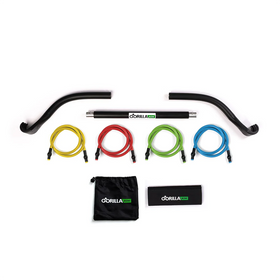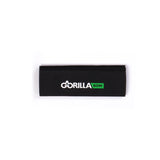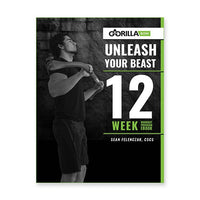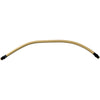5 Types Of Stretching That Are Beneficial

There are two types of people at the gym: those who do it because they want to and those who do it because they feel like they need to. Either way, you’re excited to get to work as soon as possible so you can get back to your day right away.
We’re eager to get to work too, but you can’t skip over one of the most important parts of any workout -- stretching. Although it might not feel like it’s doing you any good, stretching your muscles before a tough workout is essential.
Stretching keeps your muscles flexible, strong, and healthy. You need this flexibility to maintain the range of motion in your joints. When you don’t stretch, your muscles become tight, putting all of the stress on your joints instead. That’s where you’ll start to feel strains and pains.
It takes just a few minutes before and after your workout to stretch out your muscles and give them some love after making them work so hard. Similar to how there are basic movements for actually working out, there are also some basic movements when it comes to stretching.
Let’s take a look at some of the different types of stretches and why you should incorporate them into your daily workout routine.
1. Static Stretching
If you’ve ever even attempted to stretch before a workout, chances are you did a static stretch without even realizing it. These involve stretching a muscle out to near its furthest point and holding the position for around 20 seconds. It often focuses on a single muscle group.
These stretches are great for trying to enhance your balance as you need to hold a position for an extended period. They also really help you become more flexible because it forces your muscles to extend to their furthest point, allowing them to build up more of a tolerance to being moved in such a way.
There are multitudes of different static stretches, but a classic is the hamstring stretch when you sit down and try to reach for your toes to loosen the back of your thigh. The tricep stretch where you pull one arm to the other side of your body and hold is another good example of a static stretch.
2. Dynamic Stretching
As opposed to static stretches that focus on one muscle group, dynamic stretches are meant to work a number of muscles at one time through gradual, controlled movements. These are really useful before an aerobic workout, as they’ll help loosen up multiple muscles and help your body warm up.
An example of a dynamic stretch is doing arm circles where your body is constantly moving and activating your biceps, triceps, and shoulders all at once. You can also do spinal twists to stretch out both oblique muscles during the same movement.
3. Active Stretching
Sometimes referred to as static-active stretches, these are similar to static stretches in that you generally focus on a single muscle group. The difference is that these work to actively contract the chosen muscle group as a way to stretch the opposing muscle without external force.
Those are a lot of big words. Essentially, it’s a type of stretch that incorporates the entire range of motion of a chosen muscle without using a prop.
For example, you can lay on the floor and lift your leg into the air until you feel your hamstring stretch. Holding that position without a strap requires your hip flexors and core to keep the leg in the air while the muscles on the opposing side of the hip are statically stretching at the same time.
Active stretches strengthen agonistic muscles, which are muscles that contract while others relax in order to generate a specific movement. In the example stretch, the hip flexors are the agonist muscles.
Active stretches are usually difficult to complete and rarely need to be held for more than ten seconds at a time.
4. PNF Stretching
PNF stands for Proprioceptive Neuromuscular Facilitation. These huge words essentially refer to stretches that promote the restoration of a weakened or injured muscle while resistance is added. It’s very popular in physical therapy, but it’s also one of the most effective ways to increase static-passive flexibility.
There are three main techniques deployed in PNF stretching:
You can’t really do a PNF stretch without having a partner with you. However, these are some of the most effective stretches for increasing flexibility and allowing you to better perform other types of solo stretches.
5. Passive Stretching
Passive stretching is a form of static stretching, meaning you assume a position and hold it. However, this stretch involves the assistance of some other part of your body. For example, you lay on the ground and bend your knee towards your chest, holding it steady with your hand to stretch your quadriceps. You may choose to use a resistance band to add a little bit of muscle tension to the move.
These are especially great for post-workout as they can help you “cool down” to reduce fatigue and soreness. They’re generally easier to complete than the other stretches listed above, so they won’t require as much exertion. Try to hold these for at least 30 seconds each.
Warm-Up vs Stretching
Many people think that just doing some hamstring and quadricep stretches before a run is enough to “warm up” and get the blood pumping. However, it’s important to note that stretching is not warming up.
Warming up is, quite literally, the process of raising your core body temperature. Warming up can loosen stiff muscles and, when done properly, improves performance. If your heart rate is already up a little bit before you hit the track, think about how it will be a lot easier to beat your PRs.
You should always warm up before you stretch. A proper warm-up involves rotating some of the joints, like the shoulders or wrists, and then performing at least five minutes of aerobic activity to increase your cardiovascular input. These are things like jogging lightly or doing jumping jacks.
You can also round out your warm-up by doing “watered down” versions of the activity you’re about to complete. For example, if you’re about to play a round of golf, you can take some gentle practice swings with the club before you actually get to work.
Cooling Down Post-Workout
Cooling down is the opposite process of warming up. Here, your goal is to lower your core body temperature and regulate blood flow. It’s especially important for endurance athletes, such as marathon runners.
For a cooldown, you generally continue your workout for about five minutes, just at a slower pace. In the case of running, you should lightly jog for a couple of minutes to reduce your heart rate at a gradual pace.
It’s also important to stretch after a workout as well. This helps to keep your muscles loose and prevent fatigue later on in the day.
The Hottest Warmups and Coolest Cooldowns
Stretching is one of the most important things to do both before and after a workout. It helps to loosen your muscles and prevent injury during strenuous activity.
There are many types of stretching, but some of the main types include static, dynamic, active, PNF, and passive stretching. Using a combination of all five during your routine is essential for best results.
You also should make sure you warm up before you stretch, as this will allow your core body temperature and heart rate to increase before you actually engage in the workout. Following your workout, be sure to cool down with some more stretches to decrease the risk of muscle fatigue throughout the day.
The Gorilla Bow isn’t just for amplifying your workout -- it can also be used to add a little bit of resistance to a number of different stretches. To learn about the different ways that the Gorilla Bow can enhance your workout, the All-Access Membership has everything you need, from live classes to on-demand instruction.
Sources:
The importance of stretching | Harvard Health
Agonist muscle Definition and Examples | Biology Online
Aerobic exercise: How to warm up and cool down | The Mayo Clinic










Leave a comment